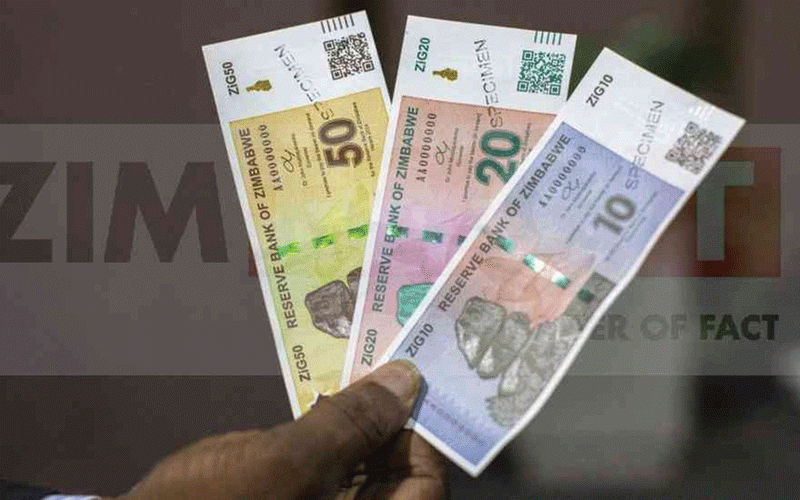
AS the festive holidays beckon, formal retailers are struggling to compete with informal retailers due to price differentials and capacity to pay producers or suppliers in hard currency.
Deliveries for fast-moving consumer goods (FMCGs) to downtown tuckshops run into the middle of the night, while opening hours have been adjusted from 6am to 9pm even on Sundays.
The collapse of the formal sector in Zimbabwe has seen an economic shift to dominance of the informal economy from volume of trade, value, and employment numbers.
According to the Zimbabwe National Statistics Agency (Zimstat), the wholesale and retail sector contributed at least 21,3% to Zimbabwe’s Gross Domestic Product (GDP) in 2021.
This means that about US$6 billion is pushed from the wholesale and retail sector with a significant portion of that amount coming from informal trade.
Informal employment
It is estimated that 88% of Zimbabweans are engaged in informal economic activities at a personal, household or enterprise level. The 2022 Labour Force Survey published by the Zimstat points that 3,3 million people are employed locally, pointing that over 2,8 million Zimbabweans derive their living from the informal sector as opposed to 495 000 in formal employment.
The level of informalisation in the country is now estimated to be over 70% due to several push and pull factors. It has been observed that developing countries with a large agricultural sector also tend to have high levels of informalisation as trade in agricultural commodities between producers and merchants are typically cash transactions.
- Promising avenues for funding African mass markets
- Informal sector now dominates Zim economy
- Take-aways from Metro Peech & Browne case
- Dissecting OK Zim’s business recovery plan, GROWTH strategy
Keep Reading
However, informality is also a factor of vulnerability, with millions of employees in the informal sector lacking job and social security, income consistency, health insurance, savings and living from hand to mouth. All these conditions are closely associated with poverty.
Defining the informal sector
The international Labour Organisation (ILO) defines the informal sector as all economic activities by workers and economic units that are not covered or sufficiently covered by formal arrangements at law.
Formal arrangements include adherence to contracts in business transactions, applying labour regulations, social security contributions, banking proceeds, paying requisite taxes and council levies, and following legal channels on importing and exporting goods.
Therefore, those employed in the informal sector are not subject to national labour legislation, income taxation, social protection, or entitlement to certain employment benefits such as maternity leave. The informal sector has been referred to as the grey economy, shadow economy, underground economy, parallel sector, and cash economy in some circles.
Zimbabwe’s dual economy
The formal sector and the informal sector have become two distinct economies in Zimbabwe with the earlier vulnerable to complex tax regime and inconsistent monetary policies while the latter has no regard for both.
The informal sector contribution to GDP is estimated to be below 50%, according to national statistics. According to the World Bank, Zimbabwe’s economy grew by 5,8% to US$19,2 billion in 2021 after contracting by 6,1% in 2019 and 6,2% in 2020.
The economic instability witnessed in the past three years also triggers informalisation, among small businesses. The existence of the dual economy makes it difficult for the government to control the economy through fiscal or monetary policy as the informal sector is largely cash based and fully dollarised.
Triggers of informalisation
The main causes of informalisation locally include the disparity between the manipulated formal exchange rate and the market rate, which results in exchange rate losses if businesses index prices using a manipulated exchange rate.
The punitive Intermediated Money Transfer Tax (recently reduced from 4% to 2%) and exchange control regime where 20% of all foreign currency deposits in local banks is converted to local currency have played a key part in chasing away hard currency deposits.
The collapse of the public service infrastructure means that confidence in the utilisation of collected tax revenues by the government has declined to zero.
Other causes include limited confidence in the financial sector, heavy tax and social security burden, high unemployment levels among youths, excessive number of regulations (overregulation of the economy), high levels of corruption in and outside government, limited pursuit by the tax collection agency and general lawlessness in the country.
Impact of policy missteps
The complex tax regime, multiple tax heads to various government entities and frequent renewals are all triggers of informalisation in Zimbabwe as businesspeople find ways to cut costs.
According to the survey conducted by the Zimbabwe National Chamber of Commerce (ZNCC) in 2019, a business operating locally will have to make at least 51 payments for various tax heads for it to be considered tax compliant.
The local taxation complexity has to do with a limited automation (excessive paperwork), archaic laws, and payment in different currencies, need to travel to Harare or other cities to make tax contributions and the multifaceted government departments involvement.
Thus, the level of informalisation is higher in rural areas where digitalisation and formal banking channels are limited.
Equally, Zimbabwe’s monetary policy is far from being consistent, in the last 15 years the local currency (notes, coins or electronic) has assumed at least five different names while there is no free-market price determination of foreign currency.
The central bank issues a plethora of circulars and regulations, which are sometimes contradictory. The high levels of money printing and resultant inflation leads to low confidence, loss of savings and income for households which inflames informalisation.
Informalisation within formal sector
The past 10 years have also seen increased levels of informalisation in business operations by players in the formal sector. Corporates are finding ways to evade taxes, compensate for the disparity between the manipulated formal exchange rates and the market rate by not banking cash proceeds, buying foreign currency off the parallel market, not paying council levies, using parallel exchange rates in forward pricing, paying employees in hard currency, not filing tax returns, externalising cash, smuggling in raw materials, and falsifying imports or exports.
Poverty and informality link
High levels of informalisation have a positive correlation with poverty. According to Zimstat, extreme poverty in Zimbabwe has been rising over the past three years, growing from 29% in 2018 to 34% in 2019, 49% in 2020 and 43% in 2021.
This means that approximately 2,2 million Zimbabweans have sunk into poverty since January 2018. Although poverty remains an overwhelmingly rural phenomenon, it has increased relatively faster in urban areas leading to the urbanisation of poverty.
Harare is one of the biggest contributors to poverty statistics in Sub-Saharan Africa, a situation exacerbated by the fact that most of the countries with high cases of poverty such as South Sudan, Somalia, Madagascar, and Burundi are characterised by conflict, civil wars, or unrest.
High informalisation unsustainable
Zimbabwe’s informal sector bears a mark of economic resilience, however high levels of informalisation are also unsustainable for any country as it leads to limited tax mobilisation on the part of Treasury which leads to poor public service delivery (dilapidated road infrastructure, power generation, health care, education, housing, water, and other amenities) and limited capacity to repay public debt (increase in arrears).
While the informal sector is growing, it cannot be excluded from consuming public services despite not contributing to tax payments. Over and above the negative aspects mentioned in the introduction, high levels of informalisation lead to a limited credit market and savings growth in the economy, limited growth in the financial and insurance sector (decline in banking sector lending and geographical presence).
Informalisation also nurtures and aids corruption, and criminal activities in the economy. Thus, levels of information must be managed to below 40% of the economy to ensure sustainable economic growth.
There is an urgent need to remove barriers to formalisation through simplifying the tax registration process and providing incentives to fiscalisation by making the cost of fiscalisation tax deductible or partnering commercial banks to spread the cost of fiscalisation on the part of the Zimbabwe Revenue Authority (Zimra).
This means that tax payments and filing tax returns should be done efficiently online without visiting the tax agency. For the few tax compliant businesses, the tax agency must process tax rebates efficiently and give holidays where it is necessary.
The government would need to chart flexible labour laws that make it easy for businesses to retrench through short-term notices and employees to quit through short term notices.
The new labour laws, which compel employers to accord permanent employment status after consecutive contracts, push employers to retrench repeat contract employees, while restricting their ability to hire short term labour.
For sustainable economic growth, supply-side incentives to re-industrialise the economy and diversify to value addition and beneficiation, and services are key to formalising the local economy. As the population grows and economic instability persists, deliberate policies must be implemented to contain informalisation and eliminating all barriers to formalisation.
Bhoroma is an economic analyst and holds an MBA from the University of Zimbabwe. — [email protected] or Twitter: @VictorBhoroma1.











